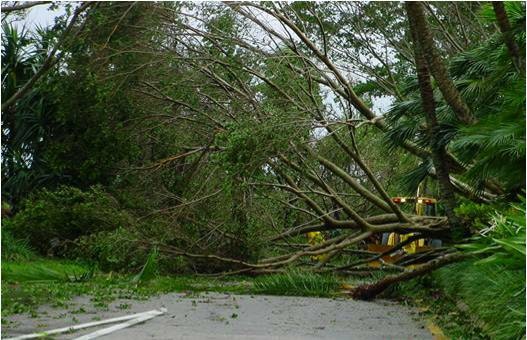Emergency Preparedness

June 1st is the start of the hurricane season. It is critically important to be prepared and not become complacent should a major storm event threaten us.
Northern’s Staff works throughout the year in preparation for hurricane season. Year-round aquatic weed control, canal bank mowing, restoration and cleaning are integral activities to provide drainage capability when needed. The storm water management system levels in Northern’s 128 square mile service area are monitored continuously by radio telemetry. This telemetry system also allows remote operation of these systems. The Administration Building and Emergency Operations Center is designed to handle a category five storm with redundant systems for power, fuel supplies, communication, septic and water systems for use by the Operations Staff before, during and following the emergency event.
There are many things Northern does prior to, during and after a storm:
Northern may lower the water level to prepare for the anticipated rainfall if the water is above its normal control level. You may notice a change in the water levels before a storm actually hits our area. Localized flooding can be caused by large amounts of rainfall in a short period of time, especially if the ground is already saturated (typical of South Florida weather patterns from June through September).
Northern Staff work diligently before an approaching storm to monitor water levels and discharge excess water in accordance with South Florida Water Management procedures. During the storms, the telemetry system allows Staff to monitor the water levels and operate the pump stations remotely through radio signals. Currently 74 different sites are monitored remotely.
For ongoing construction projects, Staff send out notices advising contractors and permittees to secure all construction sites prior to a storm. Construction job sites must be maintained so that they are free of all loose debris, trash or construction materials that might be blown into Northern’s water management systems.
Northern Staff is in contact with South Florida Water Management District and the Palm Beach County Emergency Operations Center prior to the storm event. Northern also is connected to the Palm Beach County Emergency Operations Center throughout the storm event through the County’s WebEOC program. WebEOC is Palm Beach County’s incident management application. The system is used to track information on a daily basis and during emergencies. WebEOC is a web based application that has the ability to link municipal, regional, state, federal, and private systems together, helping to facilitate coordination and decision-making for emergency response, recovery and continuity of government and business operations.
Northern’s Hurricane Preparedness manual is updated annually to provide current emergency contact information as well as flow charts of essential duties. Tasks are assigned to personnel prior to a storm with reporting requirements throughout the event.
Residents should find out now who to contact during a storm. Northern Palm Beach County Improvement District’s jurisdiction covers an area about 128 square miles, overlapping many different municipalities and agencies. Northern is responsible for many of the larger stormwater facilities; however Homeowners Associations are responsible for many of the individual neighborhood drainage systems.
In case of emergency, contact the Palm Beach County Division of Emergency Management at (561) 712-6400.
During periods of high rain, when water levels rise, gates attached to structures in the canals will open to allow maximum discharge of storm waters. Some of these structures have a fixed weir component. This is a concrete or steel structure, like a dam, that allows water to flow over it when it reaches a certain point. The water levels at all locations are monitored through the remote telemetry system either by staff located at Northern’s Emergency Operations Center or at their homes. Northern’s remote telemetry stations are equipped with backup marine batteries for continuous remote monitoring and operations.
Water may pool for a time in the streets as they are critical components of the water management plan in an area.
Northern inspects drainage facilities for damage and necessary debris removal. Necessary work begins as soon as possible including coordination with the Federal Emergency Management Association, National Resource Conservation Service and other local governments.
Northern uses several debris clearing contractors. These contractors are ready to clear debris from roadways and canals as quickly as possible. Northern coordinates with other governments to facilitate roadway clearing as well as other debris clearing. Developments within Palm Beach Gardens will generally have the storm debris managed by the City of Palm Beach Gardens, with monitoring assistance by Northern.
If and when the next storm comes, Northern will be prepared.
